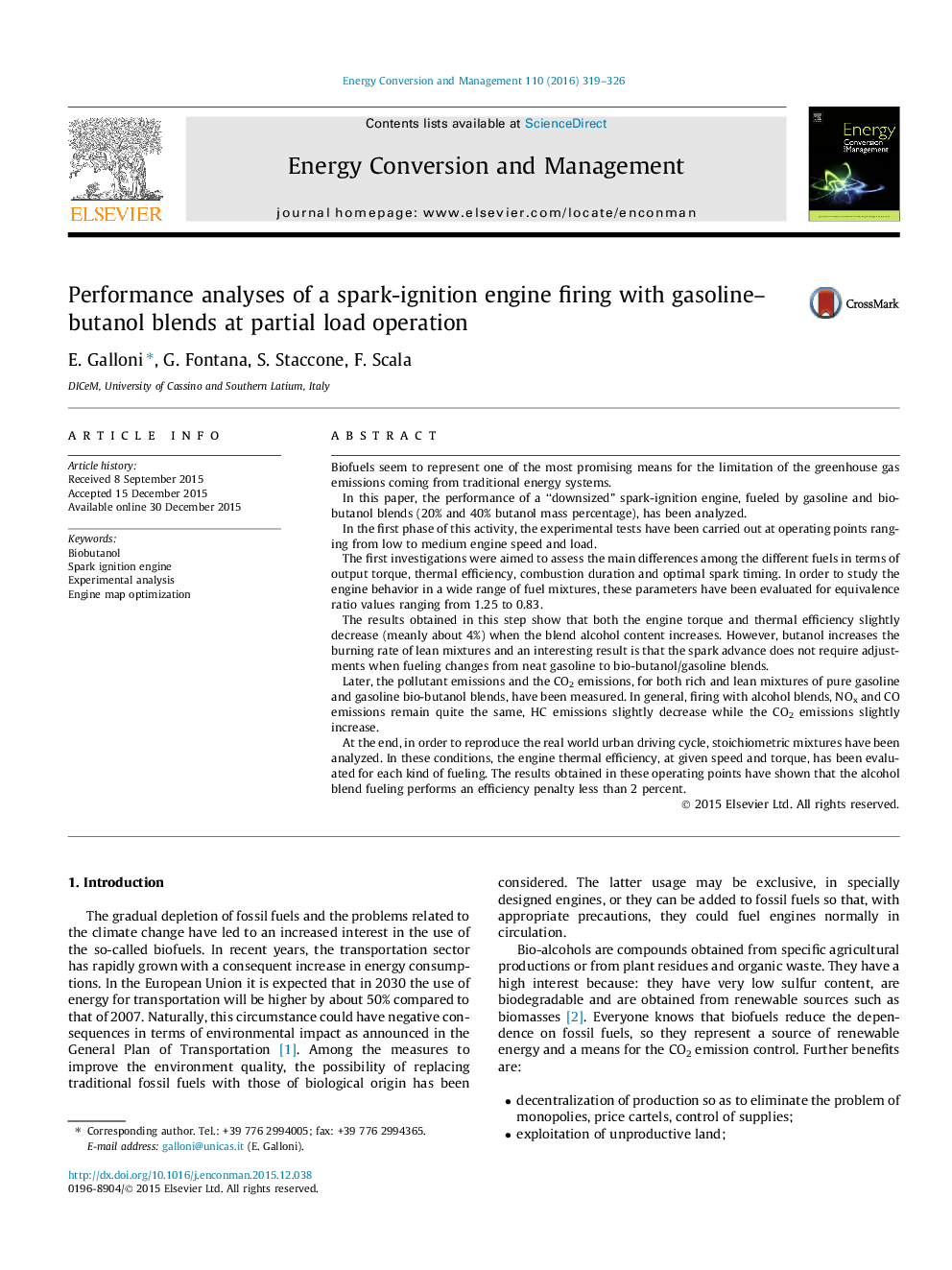| کد مقاله | کد نشریه | سال انتشار | مقاله انگلیسی | نسخه تمام متن |
|---|---|---|---|---|
| 760380 | 1462852 | 2016 | 8 صفحه PDF | دانلود رایگان |
• The potential of butanol has been investigated at partial load operation.
• Torque and thermal efficiency slightly decrease when the alcohol content increases.
• At part load, spark advance does not require changes when alcohol content increases.
Biofuels seem to represent one of the most promising means for the limitation of the greenhouse gas emissions coming from traditional energy systems.In this paper, the performance of a “downsized” spark-ignition engine, fueled by gasoline and bio-butanol blends (20% and 40% butanol mass percentage), has been analyzed.In the first phase of this activity, the experimental tests have been carried out at operating points ranging from low to medium engine speed and load.The first investigations were aimed to assess the main differences among the different fuels in terms of output torque, thermal efficiency, combustion duration and optimal spark timing. In order to study the engine behavior in a wide range of fuel mixtures, these parameters have been evaluated for equivalence ratio values ranging from 1.25 to 0.83.The results obtained in this step show that both the engine torque and thermal efficiency slightly decrease (meanly about 4%) when the blend alcohol content increases. However, butanol increases the burning rate of lean mixtures and an interesting result is that the spark advance does not require adjustments when fueling changes from neat gasoline to bio-butanol/gasoline blends.Later, the pollutant emissions and the CO2 emissions, for both rich and lean mixtures of pure gasoline and gasoline bio-butanol blends, have been measured. In general, firing with alcohol blends, NOx and CO emissions remain quite the same, HC emissions slightly decrease while the CO2 emissions slightly increase.At the end, in order to reproduce the real world urban driving cycle, stoichiometric mixtures have been analyzed. In these conditions, the engine thermal efficiency, at given speed and torque, has been evaluated for each kind of fueling. The results obtained in these operating points have shown that the alcohol blend fueling performs an efficiency penalty less than 2 percent.
Journal: Energy Conversion and Management - Volume 110, 15 February 2016, Pages 319–326
